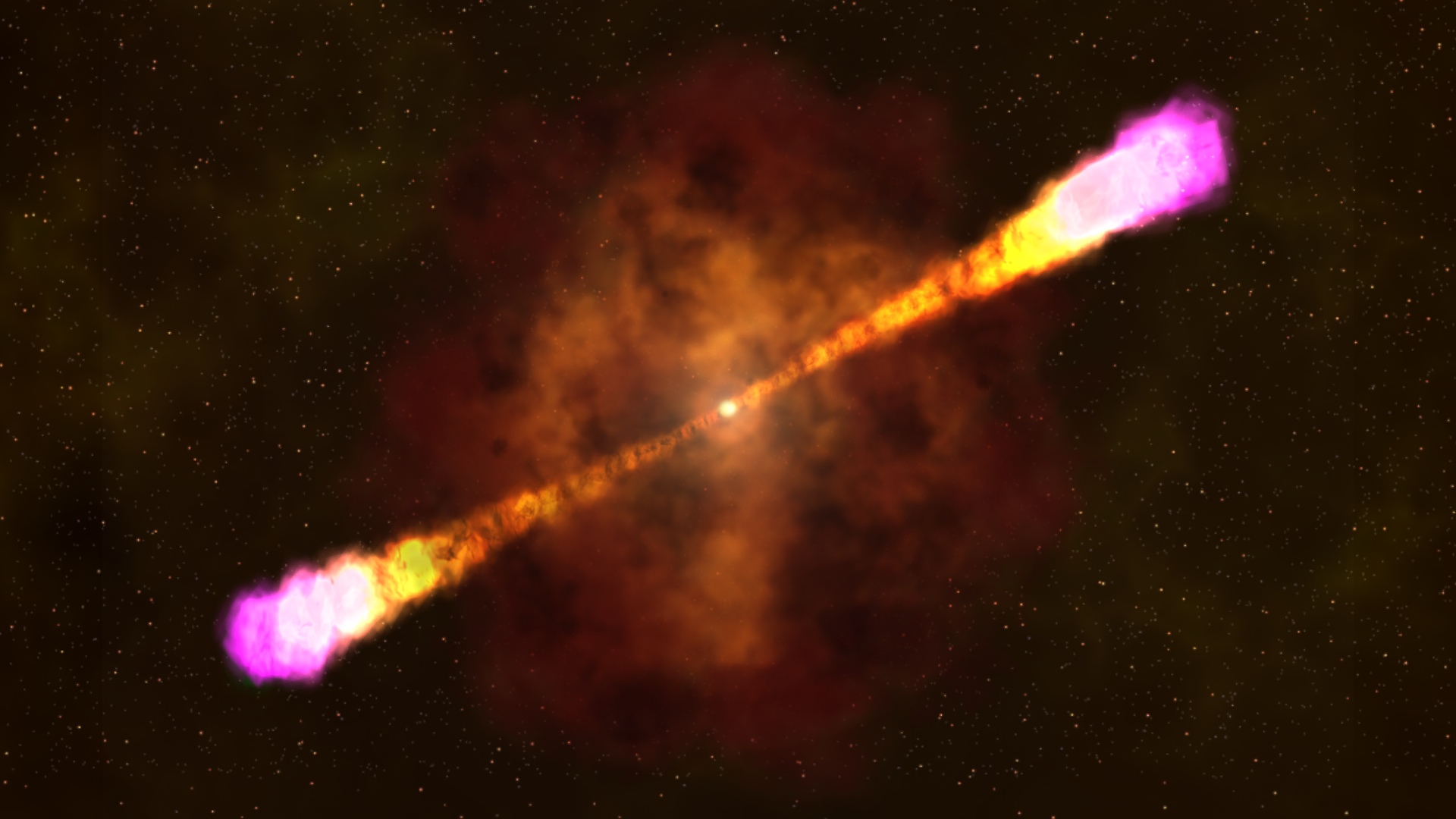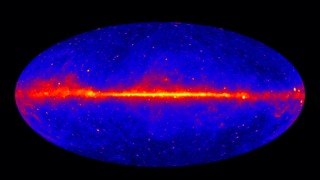The Gamma-ray Sky
Gamma rays are the most powerful form of light in the universe. In the darkness of space, these luminous rays, which are invisible to humans but detectable by spacecraft, act as celestial beacons that alert us to some of the most extreme events and objects in the cosmos. For instance, when dying stars explode as supernovae, they emit gamma rays; so do particles being sucked into supermassive black holes; as do pulsars, the rapidly rotating stars that are as massive as our sun but only about the size of Manhattan. Since 2008, NASA’s Fermi spacecraft has observed gamma rays in the Milky Way and beyond. Plotted on a map, the locations of different sources appear as bright spots in the night sky. Watch the video to see how the spacecraft detects gamma rays.

Magnificent bursts of light help scientists pinpoint the most energetic spots in the universe.
This animation shows gamma rays streaming from a collapsed star and the discovery of the source location by Fermi.

Gamma rays released from supernovae are highlighted on this map.

Material falling into supermassive black holes accounts for the majority of gamma ray sources detected by Fermi, as seen here.

This map shows the locations of gamma rays emitted from pulsars.

The main instrument aboard the Fermi spacecraft observes gamma rays across the entire sky every three hours.
Credits
Please give credit for this item to:
NASA's Goddard Space Flight Center
Images courtesy of NASA/DOE/Fermi LAT Collaboration
-
Producer
- Scott Wiessinger (USRA)
-
Writers
- Matt Davenport (USRA)
- Francis Reddy (University of Maryland College Park)
-
Animator
- Francis Reddy (University of Maryland College Park)
Release date
This page was originally published on Thursday, June 19, 2014.
This page was last updated on Wednesday, May 3, 2023 at 1:50 PM EDT.

